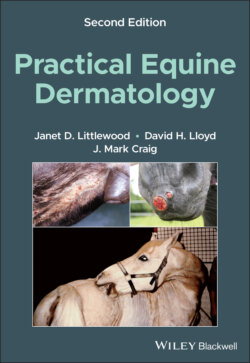Читать книгу Practical Equine Dermatology - David H. Lloyd - Страница 13
TAKING THE HISTORY
ОглавлениеThe approach (Figure 1.1) is similar to that adopted in other species.Points to include are:
Breed, age, sex, origin:Consider these aspects carefully; in many conditions, these simple data will have an important impact on your diagnostic considerations.
History of skin problems in related animals.
Type of husbandry and use:Length of time owned.Use – competitions, general riding, breeding, racing.Feeding regimen.Periods spent in stable or at pasture.Type of stable and bedding – stable hygiene, contamination.Conditions in paddocks – mature meadow pasture or new grass ley, proximity of water, trees.Seasonal changes in management.Routine health care procedures – vaccination, deworming.Figure 1.1 Taking the history. Components and the sequence of the history taking process. Analysis of the history should enable the clinician to construct an initial list of differential diagnoses that may help to focus the clinical examination along particular diagnostic lines. It may enable the diagnostic process to be abbreviated where a likely diagnosis is indicated, or it may point towards the need for a more detailed approach.Grooming procedures – sharing of grooming kit, tack, grooms.Equipment used in contact with horse – boots, bandages, saddle cloths, rugs.Contact with other horses, other species – opportunities for disease transmission.History of the current problem.First signs, progression, response to treatment and management changes.Seasonal effects.Previous episodes of disease.Results of any diagnostic tests.Current or recent therapy – includes questions about use of over‐the‐counter and non‐veterinary products.Evidence of transmission – lesions in other horses, other species, humans.General health – concurrent or previous conditions.
Figure 1.2 Clinical examination and diagnostic procedures. A thorough general and dermatological examination should be carried out unless the history points clearly towards a diagnosis. Examination coupled with history enable a list of differential diagnoses to be drawn up, formulation of a diagnostic plan and the selection of appropriate tests and sites to be sampled, and/or therapeutic trials.
